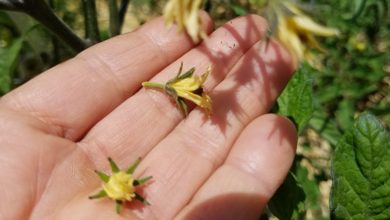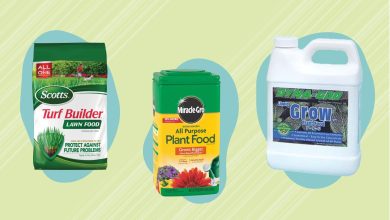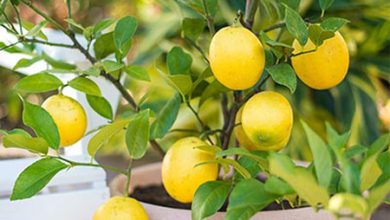Begonia Elatior: [Characteristics, Cultivation, Care, Pests and Diseases]
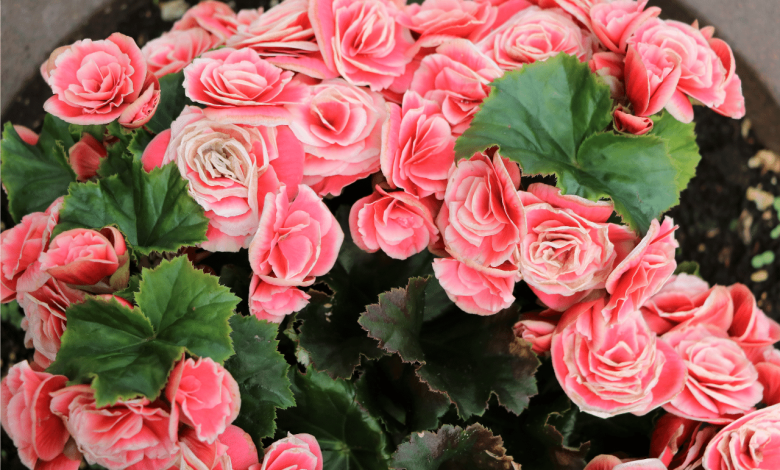
Important points when sowing Begonia elatior
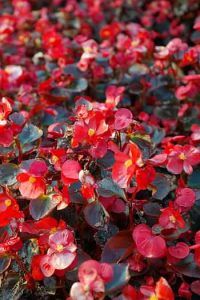 When? They are planted and multiplied at the end of spring, by cuttings and at the end of summer by tuber reproduction.
When? They are planted and multiplied at the end of spring, by cuttings and at the end of summer by tuber reproduction.- Where? In gardens, terraces, balconies, planters and pots.
- How do we prepare the land? It prefers substrates rich in organic matter, non-limestone and with excellent permeability.
- How do we sow? In pots, outdoors they do well in flowerbeds, flower beds and to form borders in gardens.
- How do we pay? Humus in flowering period is the most advisable to obtain an abundant response. Or a specific fertilizer for this floral species.
- When do they bloom? In the spring-autumn many flowers of shocking colors bloom. But with the best care you can do it all year round.
- Ideal temperature? Between 17-23ºC, is the best temperature to grow Begonias. It does not like the cold, so it should not be exposed to very low temperatures in winter. Protecting it indoors is essential for this variety.
- How do we water? The substrate must always be moist and more frequently in summer (2-3 times a week). Prevent puddles.
- Diseases and pests? Mushrooms,aphids, cochineal, mites and thrips that must be combated promptly with insecticides and fungicides.
What is Begonia elatior?
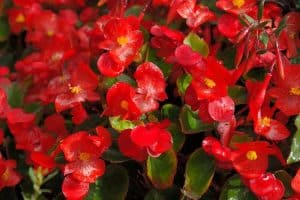 The Begonia elatior, Flower Begonia, Begoniaceae, is a plant native to South America, especially Brazil, although it has versions in the shady soils of the tropical forests of Asia and Africa.
The Begonia elatior, Flower Begonia, Begoniaceae, is a plant native to South America, especially Brazil, although it has versions in the shady soils of the tropical forests of Asia and Africa.
There are around 1,500 varieties, but the Begonia elatior is capable of blooming throughout the year as long as it receives the care it deserves.
It is considered a tuberous variety with very green leaves, with fleshy and hairy stems. But without a doubt, its flowers are the most striking and spectacular of this very popular hybrid in the world of floristry.
Many yellow, red, pink, orange, and white flowers bloom in spring and last well into fall, in single, double, and semi-double versions.
Where should we plant it?
Thanks to their magnificent foliage, they are used to set up beds in gardens and are also suitable for cultivation in pots and planters that embellish any terrace or balcony.
When should Begonia elatior be cultivated?
At the end of spring, it is a good time to plant, but if it is going to be kept indoors, it can be done in any season by reproducing cuttings, controlling the temperature and humidity.
Summer also results from the division of the tuber.
How do we prepare the land?
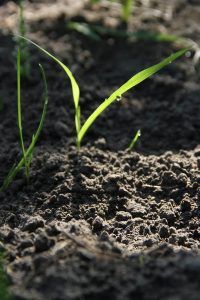 With a good non-limestone universal substrate, Flowering Begonias thrive with abundant foliage and many flowers.
With a good non-limestone universal substrate, Flowering Begonias thrive with abundant foliage and many flowers.
A soil rich in humus is perfect for its roots, because they will grow healthy, spreading horizontally.
A mixture of dry leaves, mulch and perlite (it stores water and has a neutral pH) all in a 50% proportion, will be the best gift so that the plant is always in bloom.
It is also advisable not to allow the substrate to become waterlogged. Irrigation can only be resumed after the soil has dried, but never completely. The ideal is to always keep it moist, not soaking wet.
There is a very good universal substrate for water control on the market, which contains polymers that swell when they come into contact with irrigation water and always maintain the humidity of the pot.
Consequently, the frequency of irrigation can be reduced by 40% and the plant will always be in water and environmental balance.
How to plant a Begonia elatior step by step?
Planting a Begonia eliator is not a complicated task. You can buy a specimen in your trusted nursery and proceed to transplant it into the final pot where you will take care of it so that it fully develops.
Let’s see, step by step, this simple procedure.
- In a pot of more than 10 centimeters in diameter, half fill a universal water control substrate, which you will moisten with water sprays to make it manageable, although they are always very loose, very manageable.
- Take the plant out of the original pot, making circular movements in the same clockwise direction and also against it, until it loosens and put it in the final pot, being careful not to damage the roots. Compact the earth around it, with the help of your hands.
- Add more soil from above to seal the plant inside the pot.
- Place it in a well-lit place in the house, where the light does not fall directly on it. A semi-shaded terrace is the best place.
- Water the substrate once a week, as long as it is by hydrocontrol. And more in summer if you use conventional substrates.
- Protecting it indoors in winter is essential for this variety.
By tuber cuttings with sprouts, the plant can be multiplied quite easily. It will be enough to plant them in a pot and follow the same steps of managing the substrate and irrigation, light and environmental humidity so that they germinate quickly. The best time to harvest tubers is late summer.
With these steps, we will be able to obtain combinations of plants with flowers of different colors that will be a great visual spectacle that will win many fans, both in the garden and on the terrace or balcony of your house.
What care does the Begonia elatior need?
They are somewhat delicate plants that tend to quickly contract many diseases, so all preventive and care guidelines must be followed if we want to keep them always healthy.
Lightning
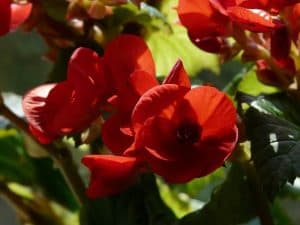 They can live quietly in semi-shade or light shade and high humidity, both in gardens and in pots.
They can live quietly in semi-shade or light shade and high humidity, both in gardens and in pots.
But at home you have to find the most illuminated place so that its growth is vigorous.
A terrace where sunlight does not shine is perfect for its beautiful floral tones to brighten up the entire spring-autumn season and beyond, as long as the care is perfect.
There is a very important point of attention on care: most Begonias varieties suffer greatly from full exposure to sunlight, because leaves burn to death.
Temperature
The ideal temperature for all varieties of Begonias ranges between 17-23ºC.
Pass
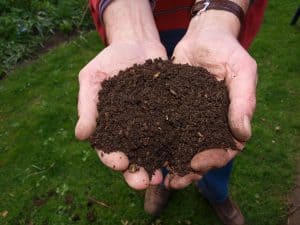 It is best to strengthen it during its flowering period with a mineral-type fertilizer that is very low in lime.
It is best to strengthen it during its flowering period with a mineral-type fertilizer that is very low in lime.
But it is best to buy a specific fertilizer for Begonias, in order not to get complicated at all in this key treatment for the cultivation of this plant, always added to the irrigation water.
A brand rich in phosphorus will also significantly stimulate flowering. Banana skins are great for fulfilling the same mission of providing mineral nutrients.
Another secret of the experts is to add a teaspoon of cinnamon powder to the irrigation water, because it is a powerful natural fungicide.
Irrigation
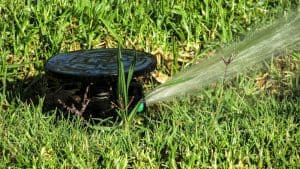 It will be key to stimulate flower production, that the irrigations are constant during the spring season, and then gradually space them out once a week when they wither.
It will be key to stimulate flower production, that the irrigations are constant during the spring season, and then gradually space them out once a week when they wither.
A trick that produces results is to preserve rainwater to irrigate this beautiful variety of Begonia and for each liter the juice of a lemon must be squeezed, which will be added to give it vigor and better health. A touch of acidity is beneficial.
What pests and diseases attack the Begonia elatior?
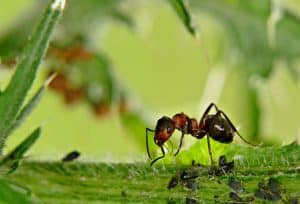 Aphids, thrips, mites, mealybugs, and powdery mildew -type fungi are characteristic unwelcome visitors to this beautiful plant.
Aphids, thrips, mites, mealybugs, and powdery mildew -type fungi are characteristic unwelcome visitors to this beautiful plant.
You must apply a systemic insecticide and fungicide to combat these evils, so that the plant incorporates its defensive mechanism.

![Photo of Carmona Bonsai Care: [Earth, Humidity and Pruning]](https://www.complete-gardening.com/wp-content/uploads/2022/08/carmona-bonsai-care-earth-humidity-and-pruning-390x220.jpg)
